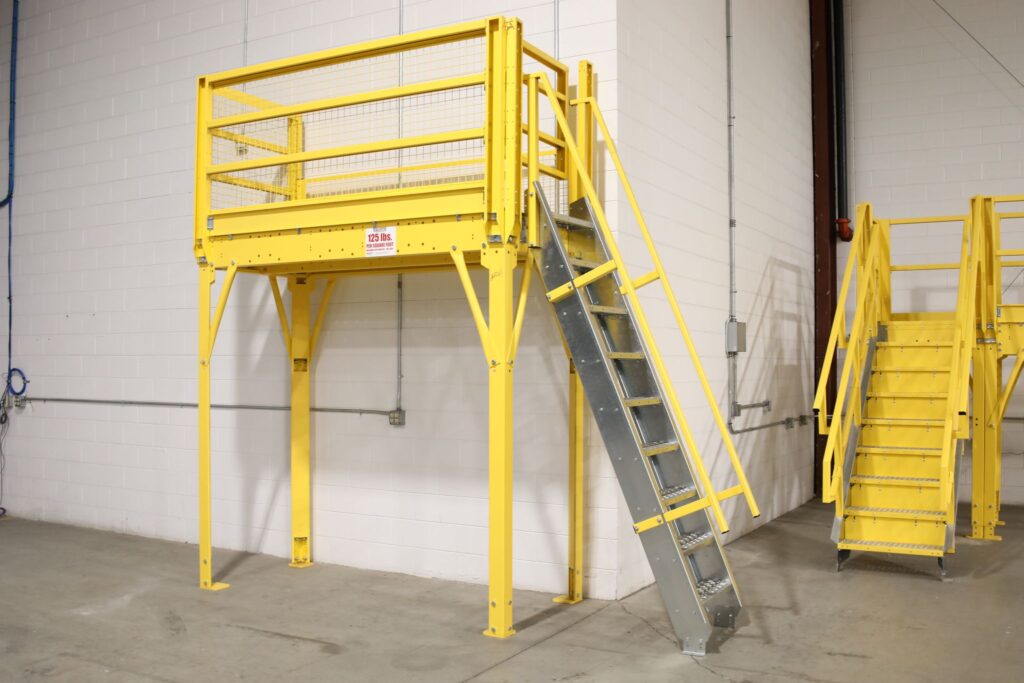Access to higher work levels in industrial processes must be safe, effective, and dependable. Be it inventory handling in high-bay warehouses, maintenance work on factory machinery, or inspections of overhead infrastructure, a stable and safe access platform is essential. The heavy duty platform ladder, a purpose-built access solution designed to withstand the harsh conditions found on industrial sites. When they are purchased from a trusted manufacturer like equip2go, ladders like these can not only allow for safe elevation but they can also lead to increased productivity, fewer workplace accidents and compliance with strict safety regulations. This guide takes a deep dive into Platform ladders for commercial use, including design principles, material considerations, safety standards, ergonomic advantages, selection criteria, maintenance best practices, and emerging innovations.
Platform Ladders and Their Importance in Industrial Areas
Industrial venues include a wide range of environments—manufacturing plants, distribution centers, chemical processing units and others. In these fields, workers frequently encounter tasks that put them at heights far beyond the capabilities of basic step stools or traditional step ladders. To fill this role, a Platform ladder offers a large, flat standing area and handrails, so workers, who can access tools, evaluate equipment, or adjust controls with both hands, do so safely. While fixed scaffolding requires a relatively lengthy setup process, the rapid mobility and assembly of Platform ladders makes them a valuable tool for frequent elevation transitions over a facility floor. Incorporating these into standard operating procedures, these ladders form an underlining aspect of safe work-at-height strategies; leading not only to better on-the-job productivity but also limiting risks.
Features of Industrial Platform Ladders
A good Platform ladder is built with facts (structural strength, user-centric design, mobility)—a skill you learn with practice and experience. The deck, which is typically built from welded steel or high-grade aluminum, provides a large standing area capable of supporting both personnel and equipment. Guardrails that run above the horizontal beam at a height great enough to form a three-sided protective wall that keeps fall risks to a minimum. For example, all equip2go models include toe boards to prevent tools or materials from falling off the deck and hitting workers below. The ladder’s frame is reinforced with gussets and cross bracing, preventing torsion when loaded, and extending the lifespan even with heavy-duty daily use. Wide footings or non-slip feet adds to the stability of the base, anchoring the ladder firmly in place during operation. Heavy duty polyurethane or nylon caster wheels enable it to be easily repositioned over concrete or tiled floors, and it is locked in place when in use.
Authorization and Safety Inspection of the Vehicle
From protecting workers against accidents and injuries, there is a web of safety regulations that govern industrial operations. In North America, OSHA standards govern access equipment utilized in work settings, specifying elements like guardrail heights, toe board dimensions, and ladder load ratings. Because European facilities follow EN 131-7 for Platform ladders, which identifies dimensional tolerances, stability tests and labeling requirements. However, to ensure you get a Platform ladder, you need to check that the product has certification marks showing compliance with the necessary standards. equip2go guarantees its industrial ladders pass these benchmarks (or better), with proof of testing (for instance with load tests at 1.5 times the rated weight capacity) provided in writing, and detailed user instructions. These regulations, when followed, serve to protect employees and also protect companies from legal action (and potential shutdown) during compliance audits.
Structure Construction and Gibson Durability
The use of materials also greatly impacts the strength, portability, and suitability of Platform ladder construction in specific industrial settings. The high strength of steel-frame ladders allows you to move heavy loads without deformation when impacted. Stainless steel components – even better, with powder-coated or zinc-plated finishes - resistance to corrosion in humid or corrosive atmospheres; ideal for chemical processing plants or coastal facilities. Aluminum ladders, on the other hand, have a much decreased weight resulting in easy manual transporting and lesser operator fatigue during repositioning.
You may also like
-
Connectivity and Community: The Strategic Location of Prateek Grand City and Its Impact on Residents’ Lifestyle
-
Analysing the Most Impactful Indian FMCG Marketing Campaigns of 2025
-
The Power of International Volunteering
-
Powering Growth: How the MRO Supply Chain Drives Industrial Success
-
Metal Casting: The Timeless Engine of Modern Manufacturing

